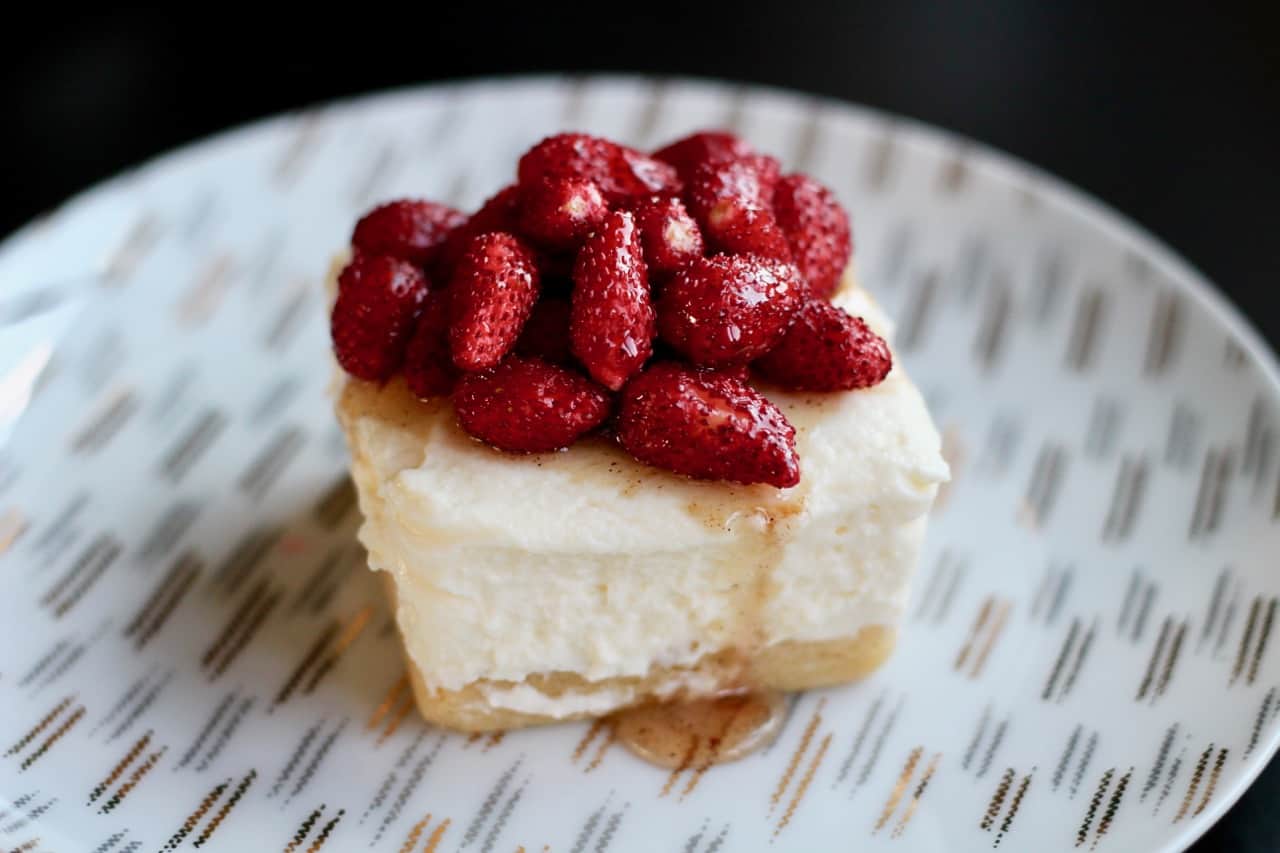
Everyone has their own idea of paradise, whether it’s a tropical island, a lake in the mountains, a tranquil forest, or whatever place brings you pure joy. Maybe even one’s own backyard. My happiest Happy Place is of the Italian persuasion… which you might have guessed by now. 😉 One place in particular that I would define as my own personal paradise is the Amalfi Coast, which is located on the south side of the Sorrentine peninsula in the Campania region. On my 2014 trip, I spent a few days in beautiful Sorrento, and I got a way-too-brief taste of Positano on a short day trip. To say that I was heartbroken to leave this stunning cliff-side town after just a few hours is an understatement. I knew that on the next trip, I would insist on staying there for a few days to soak it in… and so we did in 2016. I wrote a bit about Positano last winter already; it is the kind of place that takes hold of your soul and doesn’t let go. Oceanview homes and posh hotels spill down the side of the cliff, dazzlingly bright flowers tumble from iron gates, and meandering stone stairways carry you down to the beach. It is the stuff of Mediterranean dreams; it’s always summer here, isn’t it?? I feel like I can’t possibly do this special place justice with mere words. So, um, here are some pictures; try not to cry because we’re not there right now.
The cuisine here is what you might expect– sun-drenched Mediterranean dishes with lots of bright vegetables and ultra-fresh seafood, blistered-crust pizzas, and icy cold beverages, including the coffee granita pictured in the collage below. I can’t imagine drinking hot coffee under the sweltering Italian heat while trekking up and down stairs all day, but the frozen one hit the spot– 100x better than your run-of-the-mill iced coffee. One of the most delicious regional preparations is alla sorrentina, meaning that a dish is prepared with fresh tomatoes and mozzarella. We enjoyed gnocchi alla sorrentina, bruschetta alla sorrentina, and spaghetti alla sorrentina with reckless abandon. And the pastries! I mean, fried mini pizzas? sfogliatelle? 7-layer chocolate-hazelnut cake? chocolate for breakfast? All of the above and so much more. Sadly, I didn’t get to eat all of these, but I was enchanted just looking at all the beautiful interpretations of traditional Italian, French, Greek, and American desserts. I mean, look at that deep-dish apple crumb cake that’s better-looking than classic apple pie! One place that hooked up both sweet and savory was Collina Positano Bakery— I would make a point of visiting here on any and every trip to Positano. Besides a number of the items in the collage, one of my favorite pasta dishes ever in my entire life was devoured here. This linguine with eggplant, tomatoes, and provola cheese (smoked mozzarella) is similar to a traditional Sicilian preparation called alla norma; it altered my life view, and I’m totally okay with that.
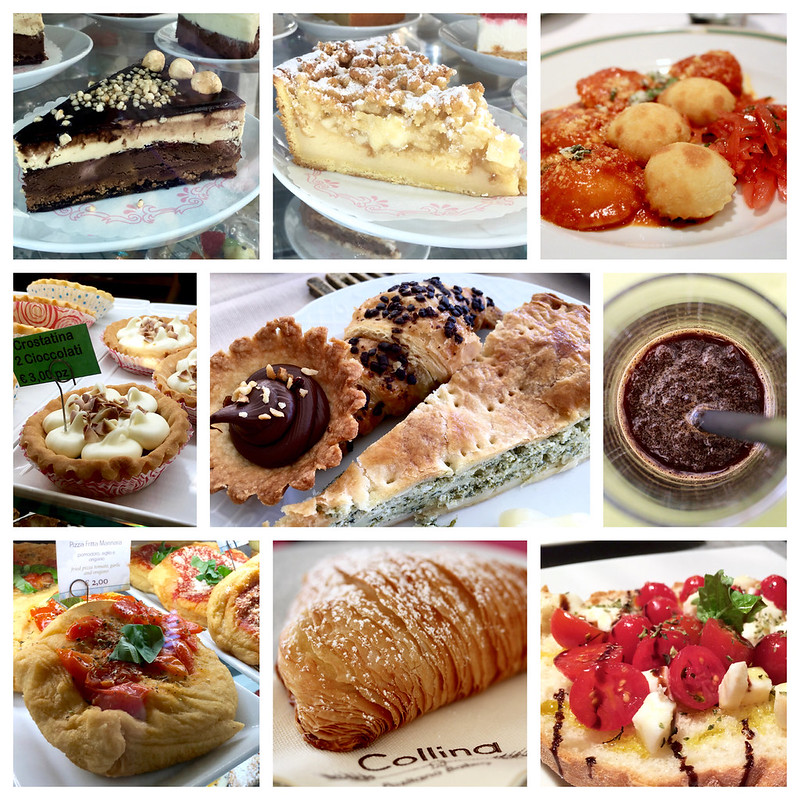
Clockwise from top-left: Torta Setteveli (Seven Veils Cake) and Torta di Mele (Apple Cake) at Positano Paradise Lounge Bar; ravioli fritti (fried ravioli) at Grand Hotel Vesuvio in Sorrento; granita al caffè at La Brezza Net Art Café; bruschetta alla sorrentina in Sorrento; sfogliatella riccia, Pizza Fritta Marinara (Fried Pizza), and Crostatina 2 Cioccolati (2-Chocolate Tartlet) at Collina Positano Bakery, and sweet and savory breakfast pastry spread at Hotel Conca d’Oro (center).
One of my favorite things about the Amalfi Coast and Sorrentine peninsula is that lemons grow absolutely E-V-E-R-Y-W-H-E-R-E. It was so cool to see lemon groves along the side of the windy mountain roads, restaurants growing them on overhead trellises, and covering entire hillsides. One gets the sense that there is real “farm-to-table” agriculture here; it’s not merely a trendy catchphrase. I don’t know enough about the Italian food industry to make a factual statement, but it would seem to be more common and more easily accessible than in the States. Many of the lemons are the size of small melons, and the entire area is drenched in lemon granitas (more granita!) and lemon-themed souvenirs. One of the most prolific treasures to purchase in this area is limoncello, the famed lemon liqueur…. I could go on, buuuut this is not a post about lemons. And much like, well, everywhere in Italy, the Sorrentine peninsula overflows with a bounty of natural treasures like olives, herbs, and nuts.
So should we talk recipes? In last year’s post about Amalfi Pear & Ricotta Cake, I wrote about an unforgettable slice of cheesecake that is never too far from my thoughts. But that infatuation actually started on the 2014 trip. Along the main pathway that winds down to the beach sits a café called Positano Paradise Lounge Bar where I laid my eyes on a captivating mini cheesecake topped with tiny wild strawberries…. which I didn’t buy. Inexplicably. I consider it one of the greatest regrets of my life. I did however take a photo of it, pining for it for 2 solid years ever since. (You would think I’m exaggerating, but I’m really not.) I knew that the #1 thing I wanted to eat in Positano on the 2016 trip was this cheesecake, and sure enough I made a beeline for the Paradise. I found a similar one, the one I wrote about last year, which was a wedge cut from a bigger cake, topped with a striking strawberry gelée. It was fluffy, light, and so summery– just what I’d hoped for. But still… it wasn’t the same as the first one, sitting there all by itself so dramatically on a shelf in the pastry fridge. (Okay, maybe I imagined the level of drama, but bear with me.) So I knew when I started working on this blog series that Wild Strawberry Ricotta Cheesecakes would be the dessert I would re-create from the Amalfi Coast. What I didn’t know until now is that Italy is one of the world’s most prolific strawberry growers. A town called Lago di Nemi (Lake Nemi) in the sorta-nearby region of Lazio is famous for its fragoline di bosco, tiny wild strawberries.
I searched high and low, both in English and Italian, for a recipe that I thought would approximate that luscious cakelet that I coveted in Positano, but the closest insight that I was able to gain was that it was probably a no-bake cheesecake set with gelatin, since it didn’t have a browned exterior; this was no New York-style dense cheesecake. None of the possible recipes seemed particularly reliable for one reason or another. I then found a recipe in a rather unlikely source, if we’re talking about Italian cheesecake… The most similar thing that came to mind was Dominique Ansel‘s Cotton-Soft Cheesecake from his bakery in New York City– a light-as-a-feather mousse dome which he tops with brûléed sugar. I bought his cookbook when it came out a couple of years ago, and in thumbing through the recipes, it became apparent that this would mostly be a pretty book to look at, since I rarely have the time for such intricate recipes. But Cotton-Soft Cheesecake is indeed included in the book, and it wasn’t especially hard, and I was astonished to read in its description that the cake was created in the style of Greek cheesecake, which quickly morphed into ROMAN (i.e. Italian) cheesecake when Greeks migrated to the Italian peninsula! So I felt like this would be a fairly authentic source to use that could approximate the cheesecake of my Amalfi Coast dreams. 🙂
The other unlikely connection to Dominique Ansel is that he makes a gorgeous wild strawberry pavlova every spring for just a few weeks, for which he flies in wild strawberries from Málaga, Spain overnight to New York. I was lucky enough to be there in April 2016 to experience the exquisiteness. I was drawn to it because those little strawberries that I’d seen in Positano two years earlier were still etched on my brain…
And then the question was, could I even get the magical strawberries this time of year? I mean, regular strawberries, sure; but these special ones? The cheesecake sighting was in June of that year, and the pavlova was had in April. I immediately went into Emergency Foraging Mode– the thing that happens when I realize that the materialization of a dessert hinges on finding an obscure ingredient right now. Sometimes EFM leads me to do crazy things like drop everything and head up to specialty markets in San Francisco. Even Bi-Rite Market, which has pretty much every rare and beautiful item you could want, didn’t have them, but fortunately a friend alerted me that the Happy Quail Farms booth at the Ferry Building Farmers’ Market had them! They cost as much per pint as a full flat of regular strawberries, so this was definitely a one-time deal, but I had to have them… (The absurdity of this whole adventure was not lost on me, I assure you…)
Really, the easiest way to get your hands on wild strawberries is to grow them yourself, which I plan to look into for next summer. They are a species called fragaria vesca, also known as fraises des bois or alpine strawberries, which are difficult to grow commercially because of their fragility and low yield, hence the cost and rarity. Also, it’s perfectly fine to use other wild strawberries or regular sliced ones if you’re not as inclined to grow your own or charter a strawberry search expedition. 😉
Oh, a handful of recipe tips:
- You’ll need to use fresh cow’s milk ricotta here, the kind that comes packed in liquid (often with a draining basket). The ricotta you get in a tub at the supermarket is really quite a different product, and I don’t know that it would work in this recipe, though I haven’t tried it. For sure, it wouldn’t have the light, airy texture and delicate flavor that we’re going for here. If you live in the San Francisco Bay Area, I would recommend Bellwether Farms Whole-Milk Basket Ricotta.
- I used a mini cheesecake pan with removable bottoms that yields 12 square mini cakes (3x3x2″) similar to this, but you can really use whatever shape or size you like, particularly because you’re not baking the mousse. I would ideally use 3″ round cake rings, but I don’t have a set of those. You could even make one large cake if you wish, probably about an 8″ one. Using cake rings, a pan with removable bottoms, or a silicone pan (you can essentially push the cakes up and out by peeling away the silicone) will yield the cleanest cake sides; I would not recommend a pan where you’d have to flip the cakes out upside-down.
- I loved the fluffy, creamy texture of my cheesecakes; however, they could have looked a little smoother on the sides. This was mostly due to unmolding them too early. In my rush to catch the last bit of daylight for photos, I popped the cakes out too early, and they were still a touch soft. Follow the freezing time below for smoother sides.
- The recipe in Chef Dominique’s book says it yields 10 cakes using 3″ cake rings. I got only 6 cakes using a pan of 3″ squares, so it will depend on the size and shape of your cake molds. I initially made too much crust, as you can see in the crust photo below, so I adjusted the quantity for 6 mini cakes. You may need to tinker with the proportions to get the right amount of crust and cheesecake mousse for your cake equipment; feel free to double the recipe if you want more cakelets.
- If you wish to forgo the fruit altogether and brûlée the cheesecake tops, check out this video of Chef Dominique himself. He does the gelatin part a little differently than the recipe describes, but you can see how to finish the cakes with sugar:
I hope you enjoy these little morsels of Amalfi Coast heaven. I, for one, wish I could teleport myself back to that beach right about now… 🙂
This is the 3rd installment of my series on Italian regional desserts. Start here for an intro to Italian regional cuisine, my experiences traveling in Italy, and information about Italian pantry items for baking. Next up is the southern region of Puglia.
Ricotta Cheesecakes with Wild Strawberries
Yields 6-10 mini cakes
For the crusts:
- ¼ cup (50g) granulated sugar
- 4 tablespoons (½ stick) cold butter, cut into small pieces
- ¼ kosher teaspoon salt
- ¾ teaspoon pure vanilla extract
- ¾ cup (90g) all-purpose flour
- ¼ cup + 2 tablespoons (37g) almond flour or finely ground blanched almonds (no skins)
For the cheesecake mousse (adapted from Cotton-Soft Cheesecake in Dominique Ansel: The Secret Recipes):
- 2¼ cups (528g) fresh whole-milk ricotta, drained for 24 hours
- ⅓ cup + 1 tablespoon (85 grams) heavy whipping cream
- ½ gelatin sheet (Silver/160 bloom) or ½ teaspoon powdered gelatin
- ⅓ cup + 1 tablespoon (80 grams) granulated sugar
- 2 tablespoons lemon juice
For toppings:
- ¼ cup granulated sugar
- 2 tablespoons water
- ¼ teaspoon vanilla bean paste, vanilla bean seeds, or ground vanilla
- 1 pint wild strawberries, or small strawberries sliced in half, or fruit of your choice (I topped some with blueberries and figs)
- To brûlée: granulated sugar as needed
To make the crust:
Preheat an oven to 350°F and position a rack in the center.
Place the sugar, butter, salt, and vanilla in the bowl of a food processor fitted with the metal blade. Pulse until the ingredients come together into a soft clumpy mixture. Add the all-purpose and almond flours, and pulse until the mixture clings together in large sandy clumps. It should hold together if you pinch a small amount between your fingers.
Scoop the crust dough into the wells of your prepared cake pan and press each mound down firmly and evenly into the bottom. Transfer the pan to the freezer for 15 minutes, then bake the crusts until they start to take on a little golden color, about 12-15 minutes. Remove the pan from the oven and set it over a wire cooling rack to cool the crusts completely.
To make the cheesecake mousse:
Make sure you have drained the ricotta for about 24 hours. Using a flexible spatula, press the ricotta through a fine-mesh screen or sieve into a mixing bowl. In a separate bowl, whisk the heavy cream to stiff peaks. Transfer both bowls to the fridge while you proceed with the next steps.
Soak the ½ sheet of gelatin in a bowl of cold water until it has softened, about 10-15 minutes. Gently squeeze the excess water from the gelatin sheet. (More about gelatin [here].) If you are using powdered gelatin, sprinkle ½ teaspoon gelatin over 1½ teaspoons water in a small bowl and stir it in; let it sit for 10-15 minutes to fully hydrate the gelatin.
Stir together the sugar and lemon juice in a small saucepan to moisten the sugar. Gently stir over medium heat until all of the sugar has dissolved and bring it to a boil. Remove the pan from the heat, swirl the syrup a couple of times, and add the bloomed gelatin. Whisk until the gelatin has completely dissolved and set the syrup aside, keeping it warm.
Retrieve the ricotta from the fridge and give it a quick whisk. Stream in the sugar syrup and whisk it into the ricotta until fully incorporated.
Take the whipped cream out of the fridge and gently fold ⅓ of it into the ricotta with a rubber spatula, being careful not to deflate the cream, then fold in the rest. The cheesecake mousse should have a consistency similar to thick Greek yogurt.
Fit a pastry piping bag with a large round plain decorating tip. Twist the bottom of the bag just above the top of the decorating tip to keep the cheesecake from leaking. Transfer the mousse to the pastry bag.
To assemble the cheesecakes:
Retrieve the cake pan with the almond shortbread crusts and pipe a mound of cheesecake mousse into each one, filling it to the top. Smooth the tops so they are flush with the cake pan. Stick a piece of plastic wrap directly onto the surface of the cheesecakes and transfer the pan to the freezer for about 2 hours, or until they are solid.
Remove the pan from the freezer and let it sit at room temperature for about 5 minutes. If the cakes do not push up easily from the bottom, you can use a kitchen torch to gently warm them, being careful not to heat them so much that they soften. Put the cheesecakes in the fridge while you prepare the fruit topping.
To garnish the cheesecakes:
Combine the sugar and water in a small saucepan over medium heat, stirring until the sugar melts. Add the vanilla and bring the syrup to a boil; let it cook for about 3-5 minutes, or until it thickens slightly without picking up any caramelized color; let the syrup cool to nearly room temperature.
Place the wild strawberries in a bowl. Once the syrup has cooled, pour it over the strawberries and gently toss them with a wooden spoon to coat all the berries.
Place a small mound of strawberries on each cheesecake, with a higher peak in the center. Serve the cheesecakes immediately once you put on the topping. Ungarnished cakes can be stored in the fridge for 24 hours.
Make ahead: You can fully make the cheesecakes and keep them in the freezer for about a week. Thaw overnight in the fridge before proceeding with the topping.
© Dafna Adler & Stellina Sweets, 2017.
SaveSave
SaveSave







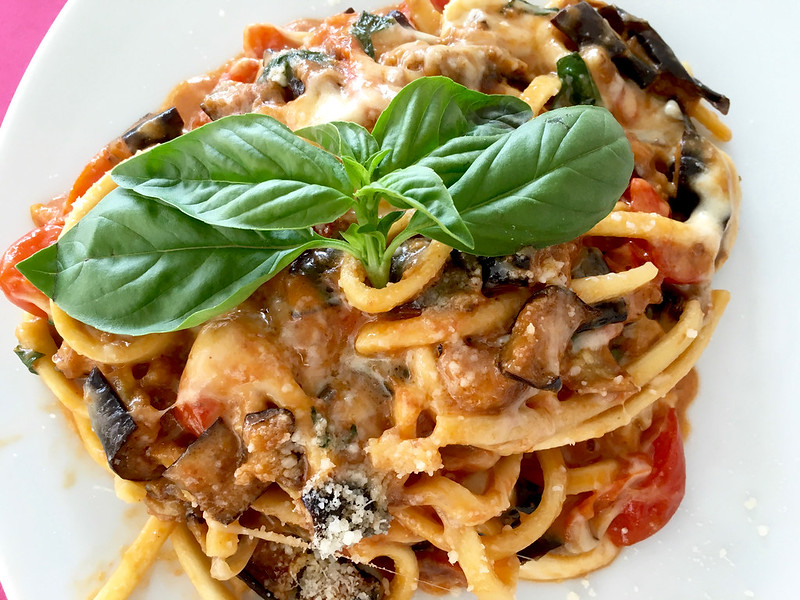
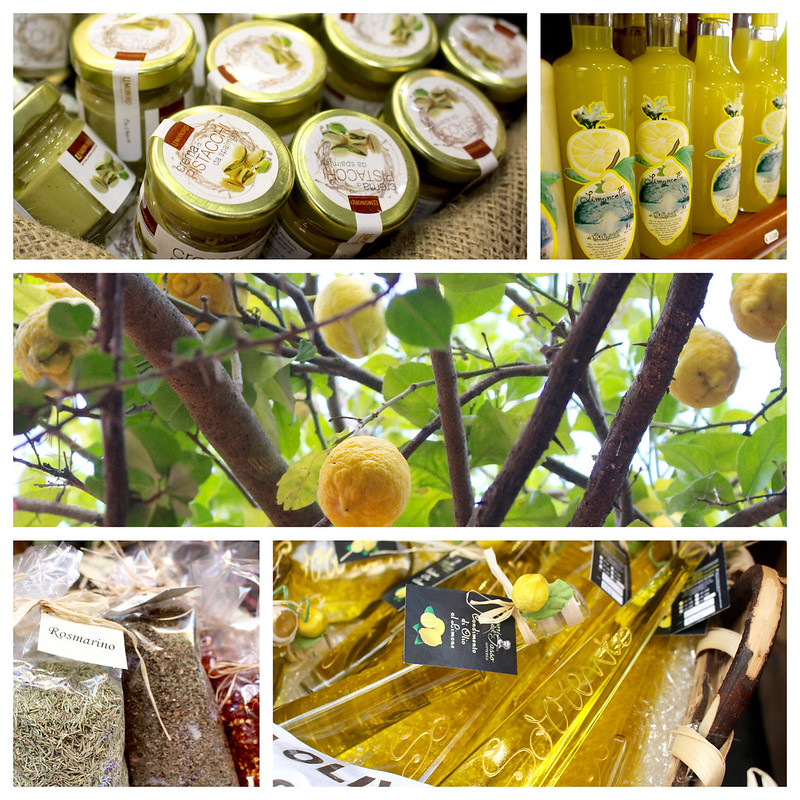
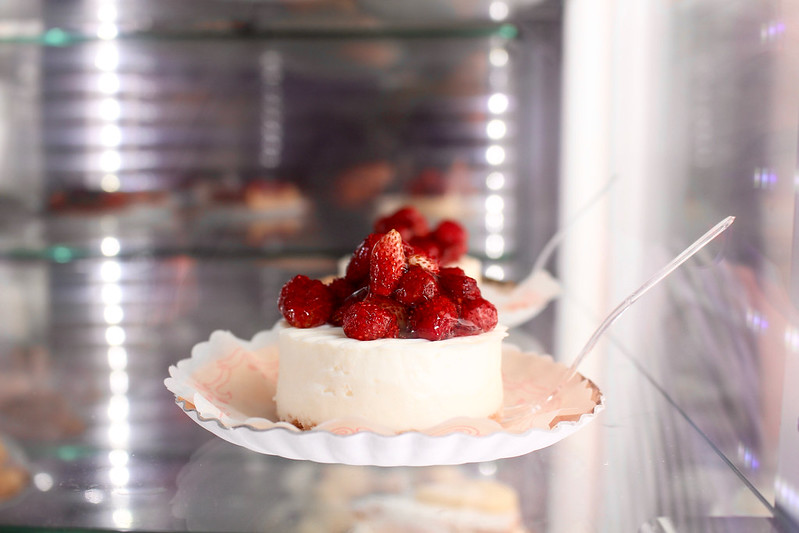
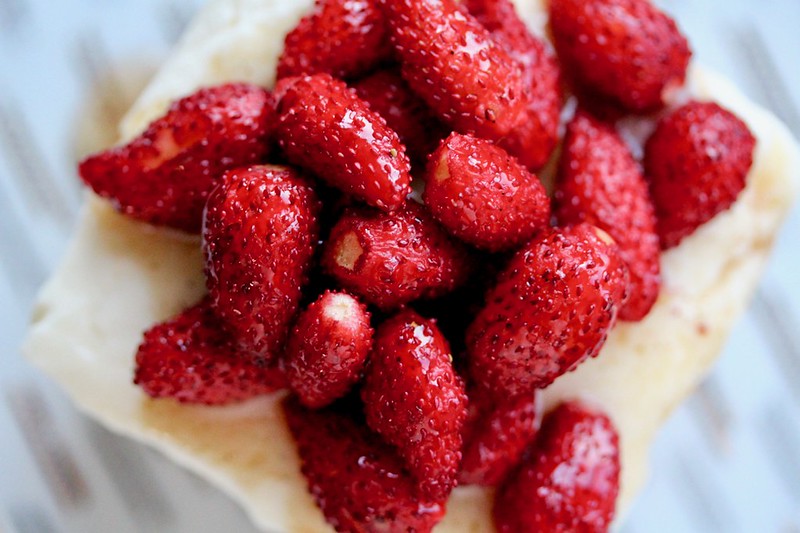
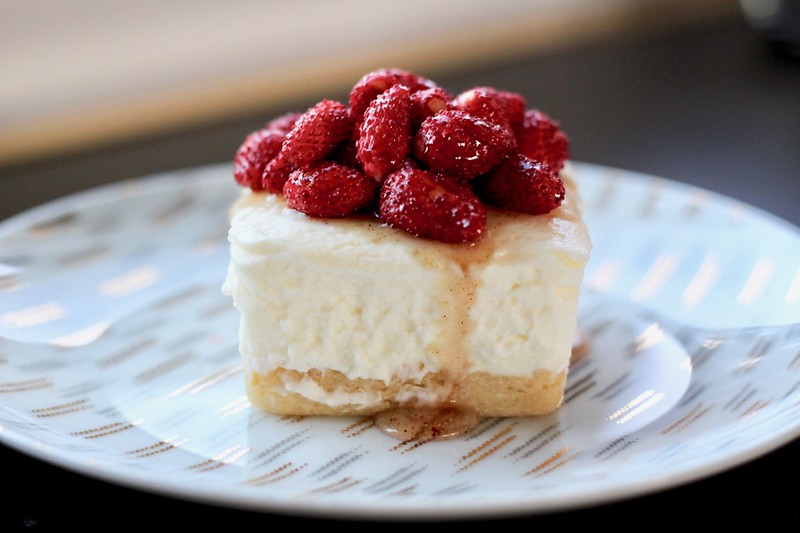
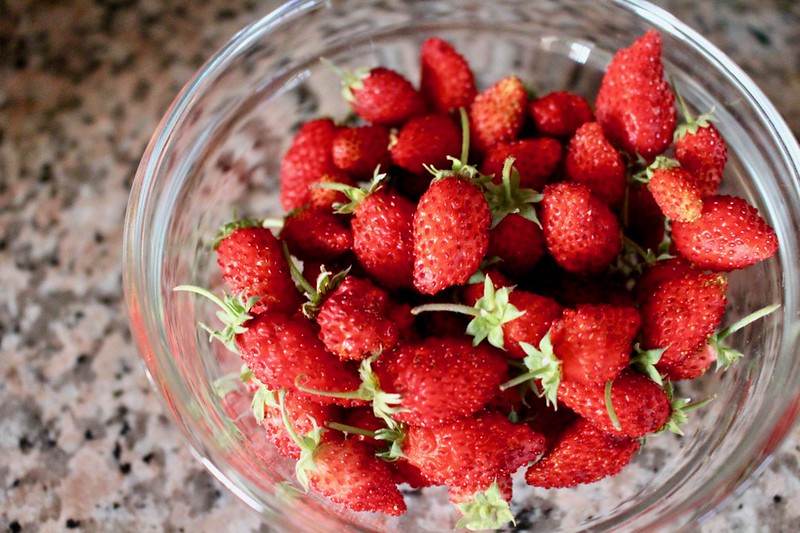
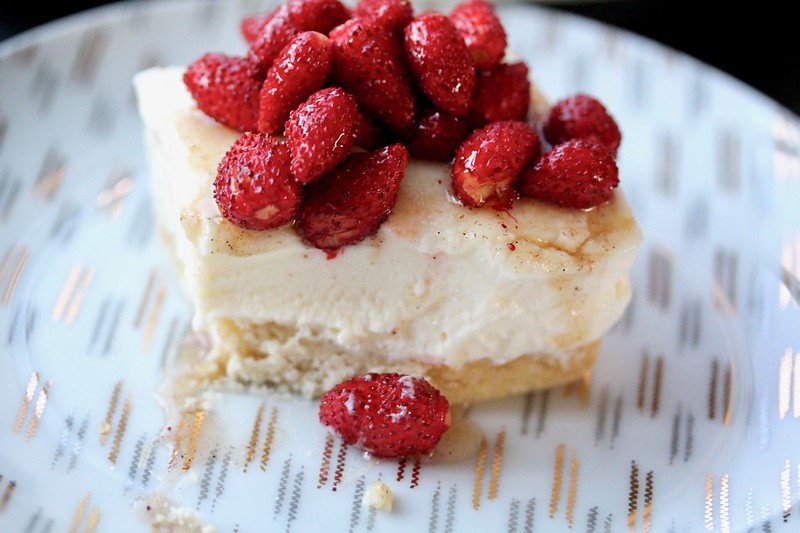

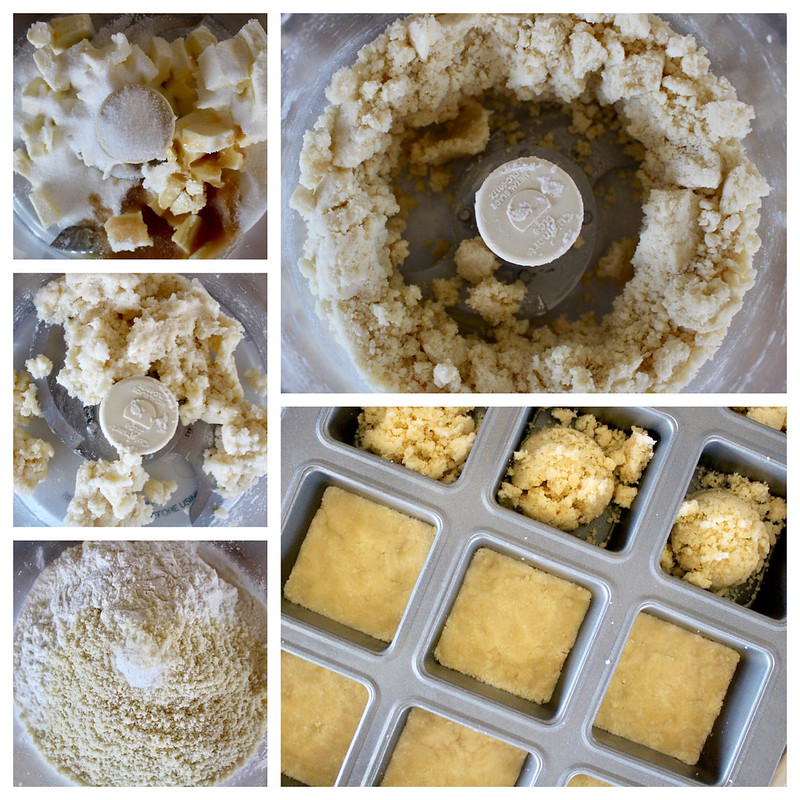

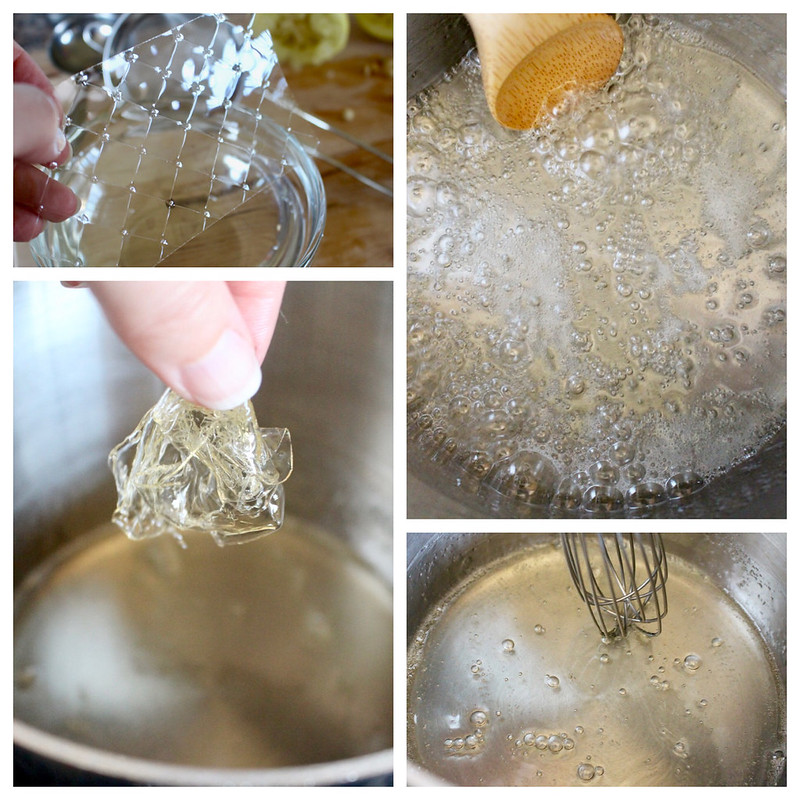



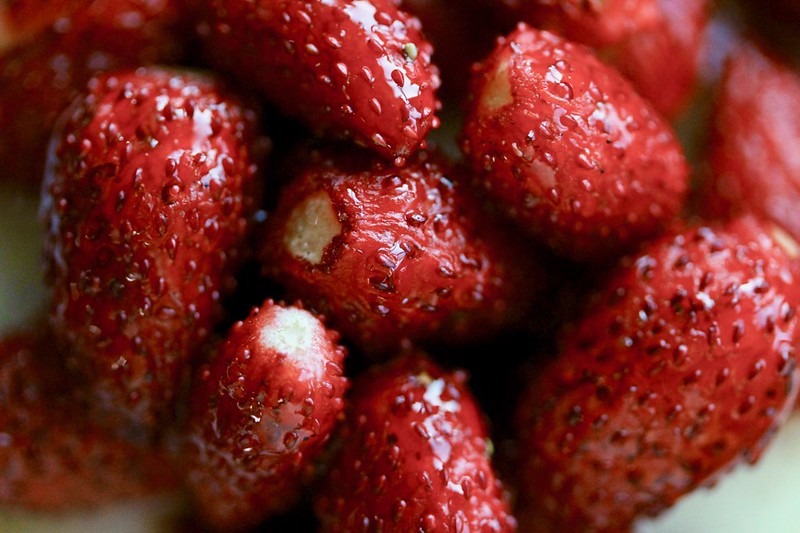
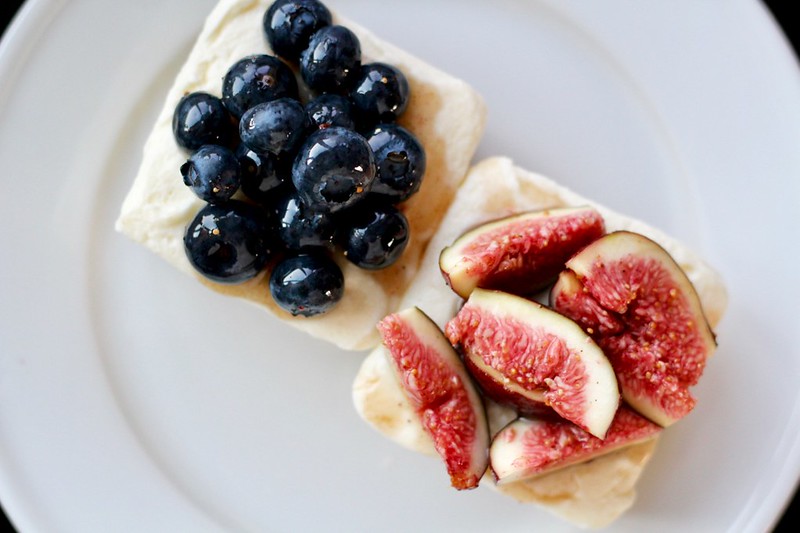
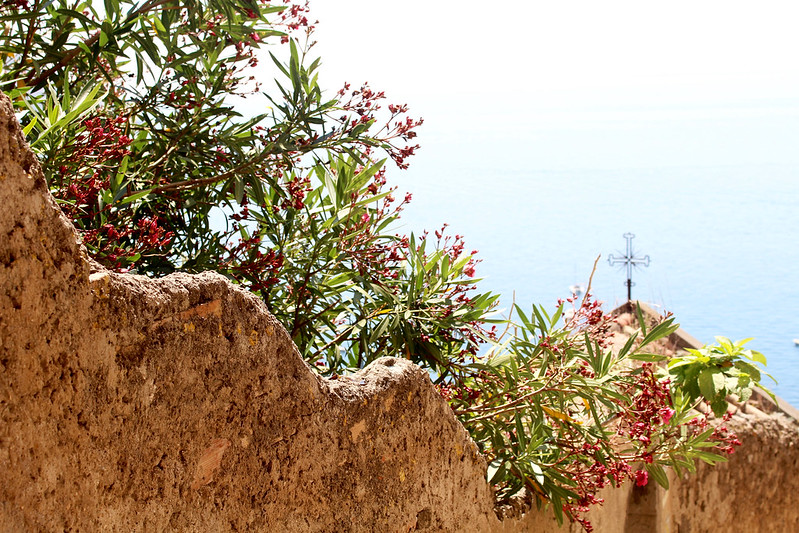
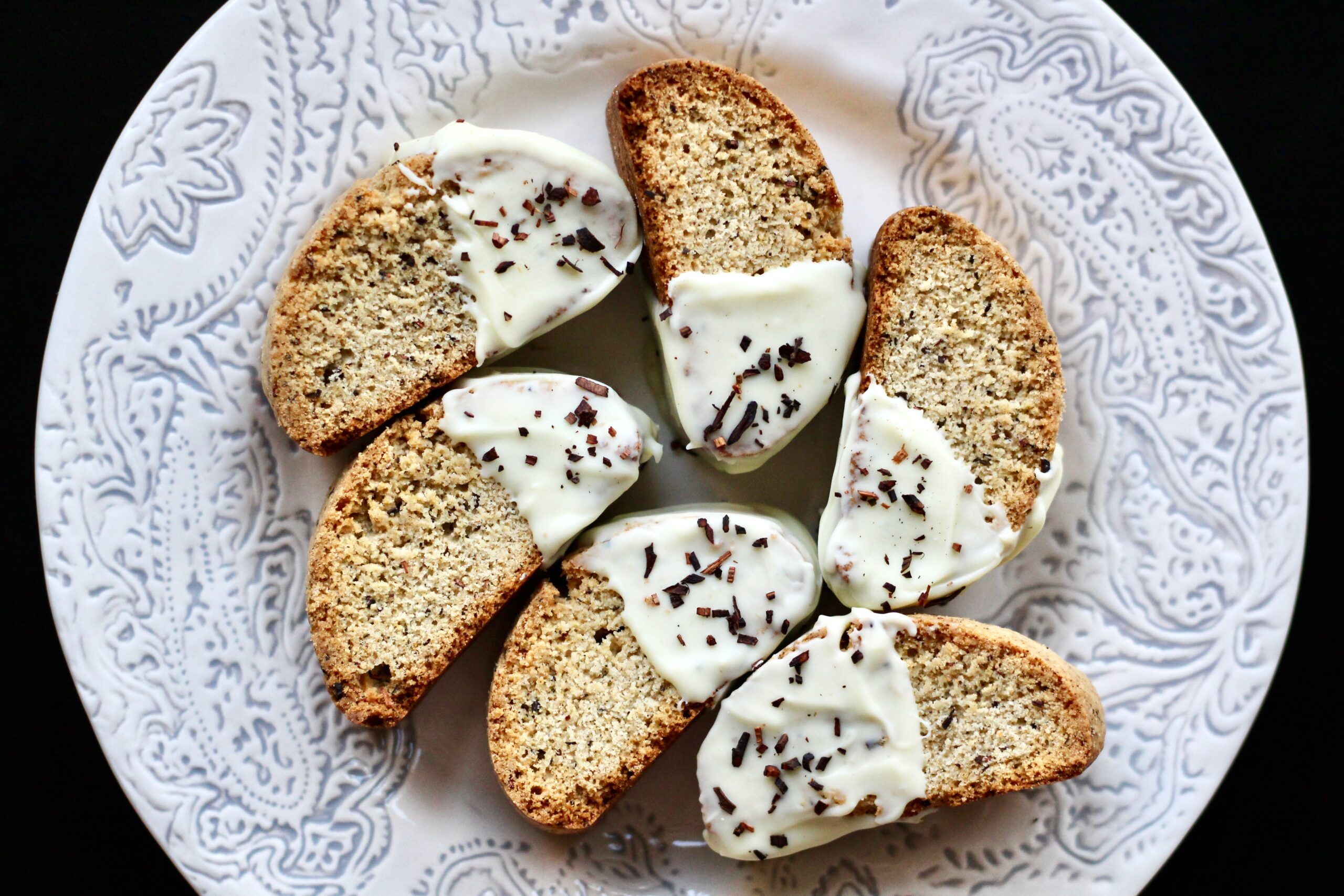
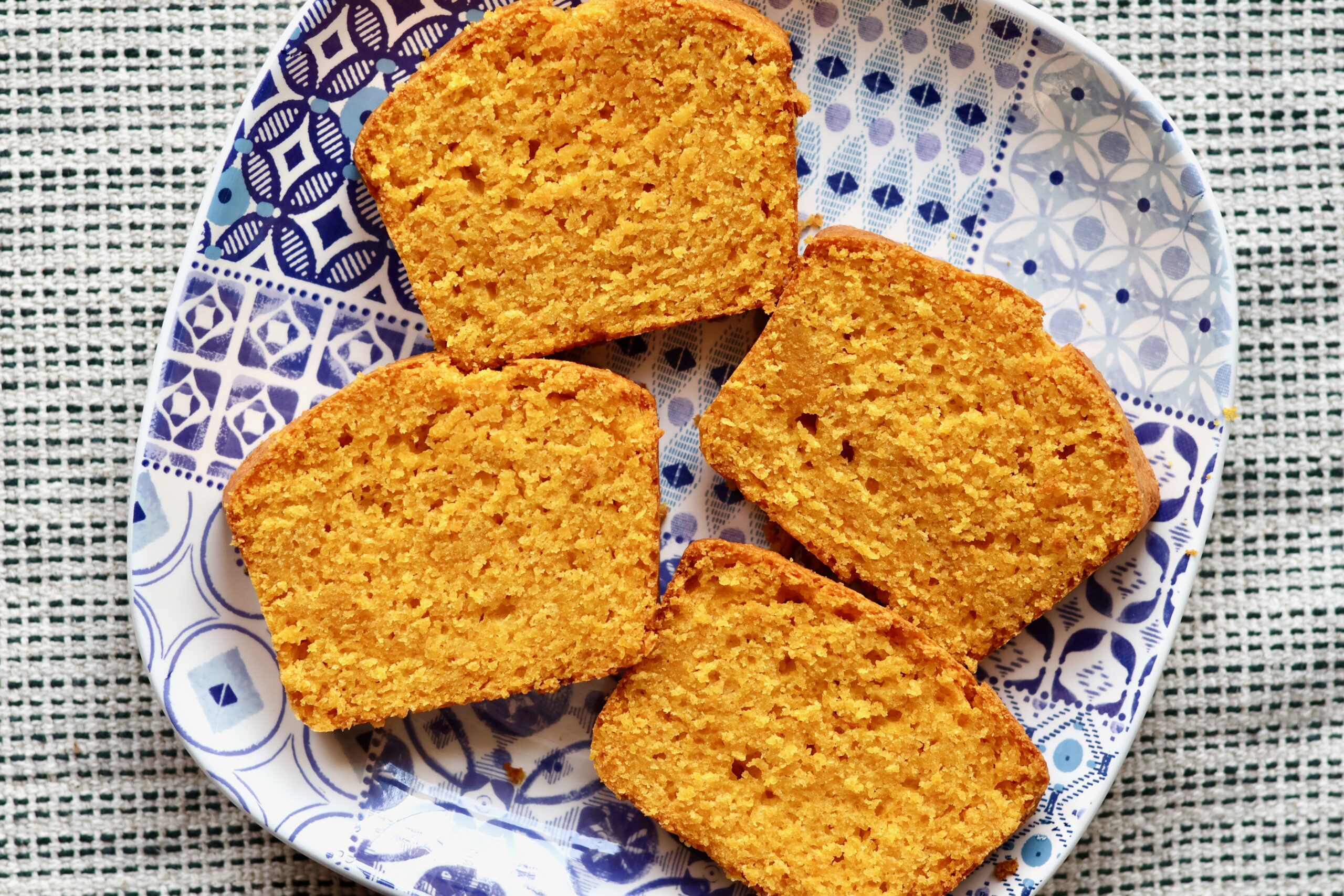
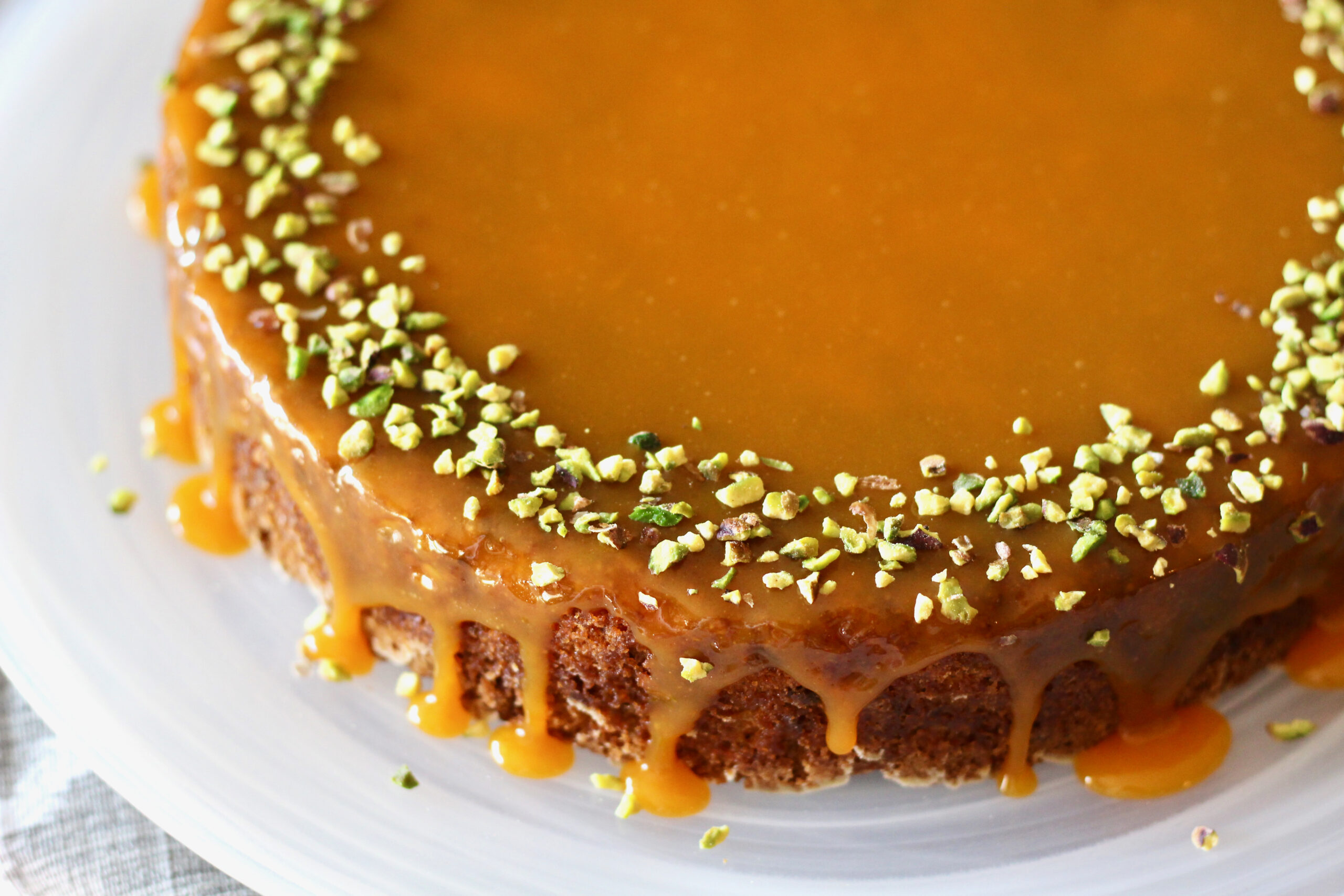
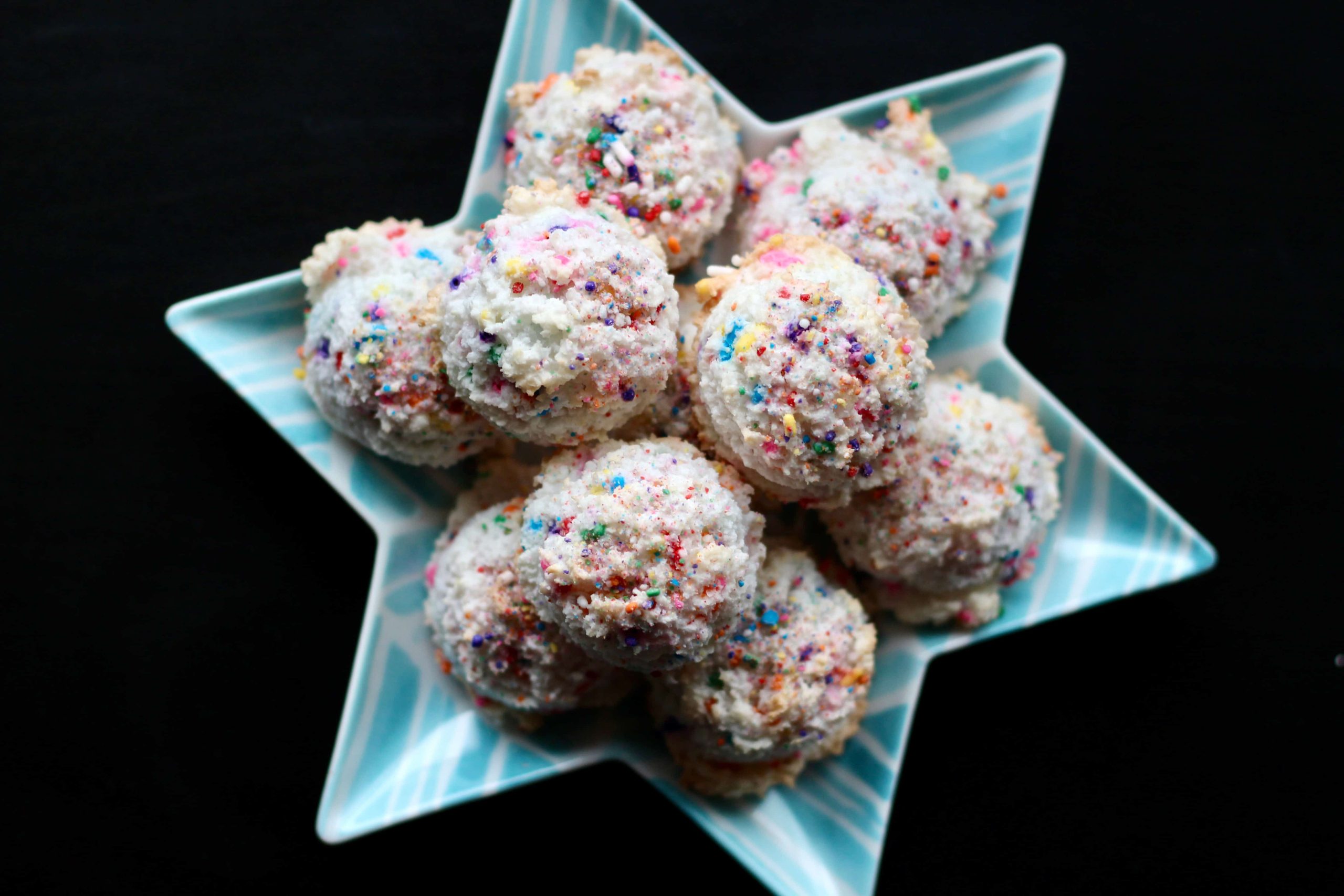

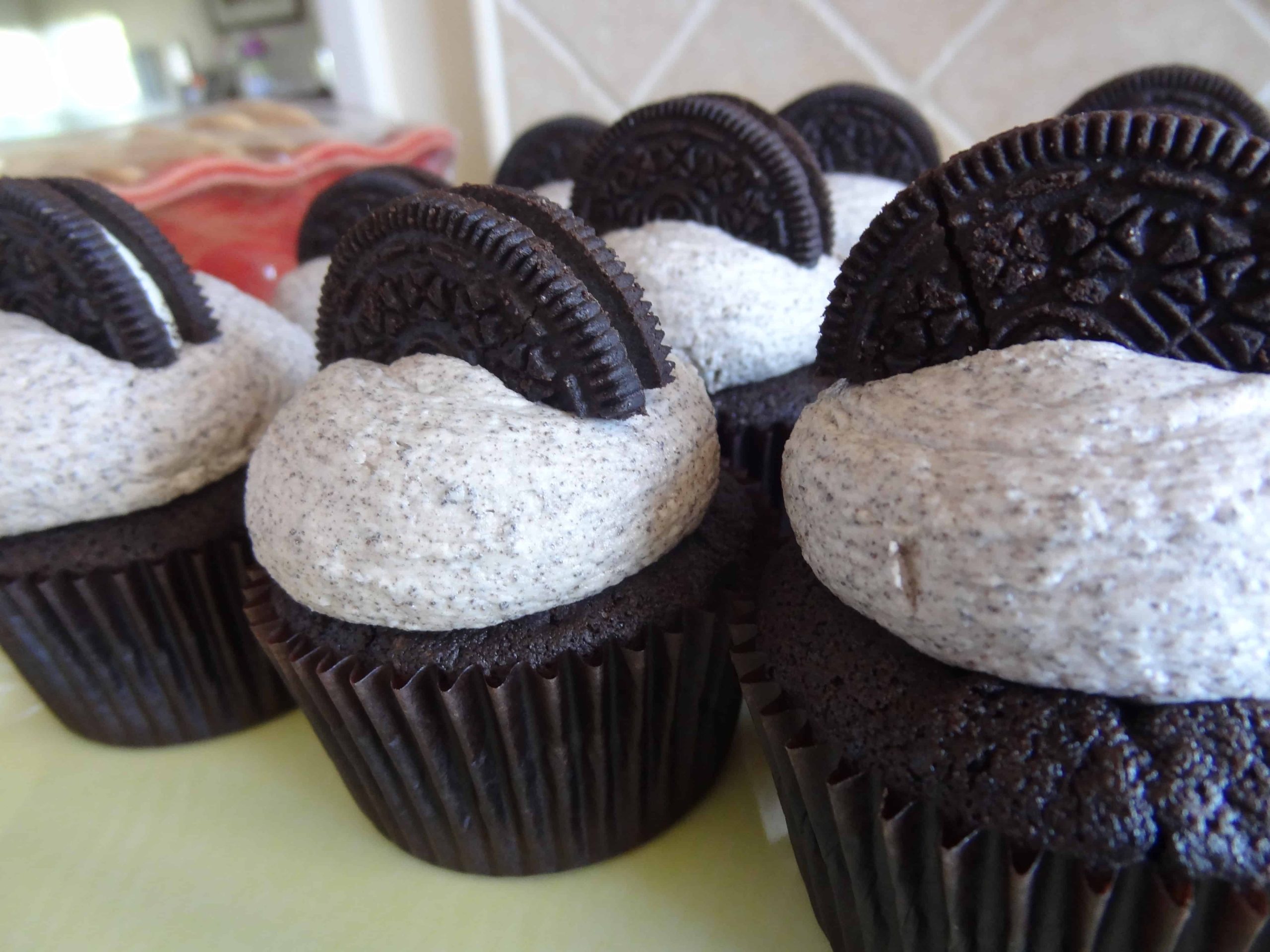

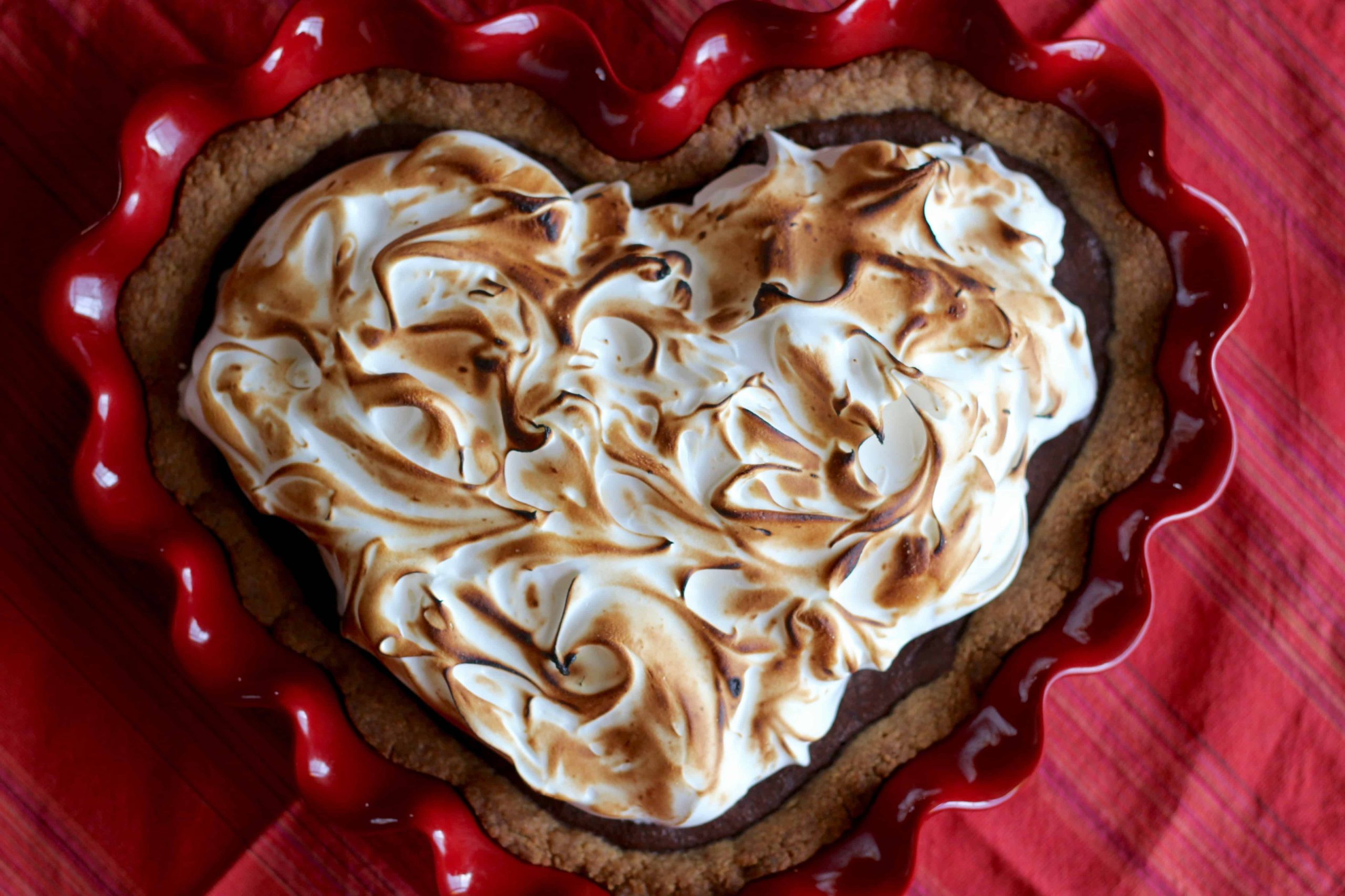
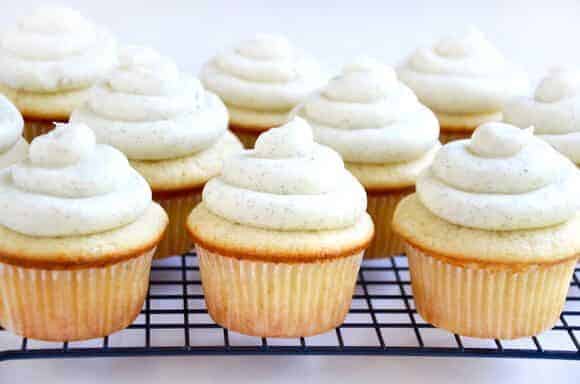
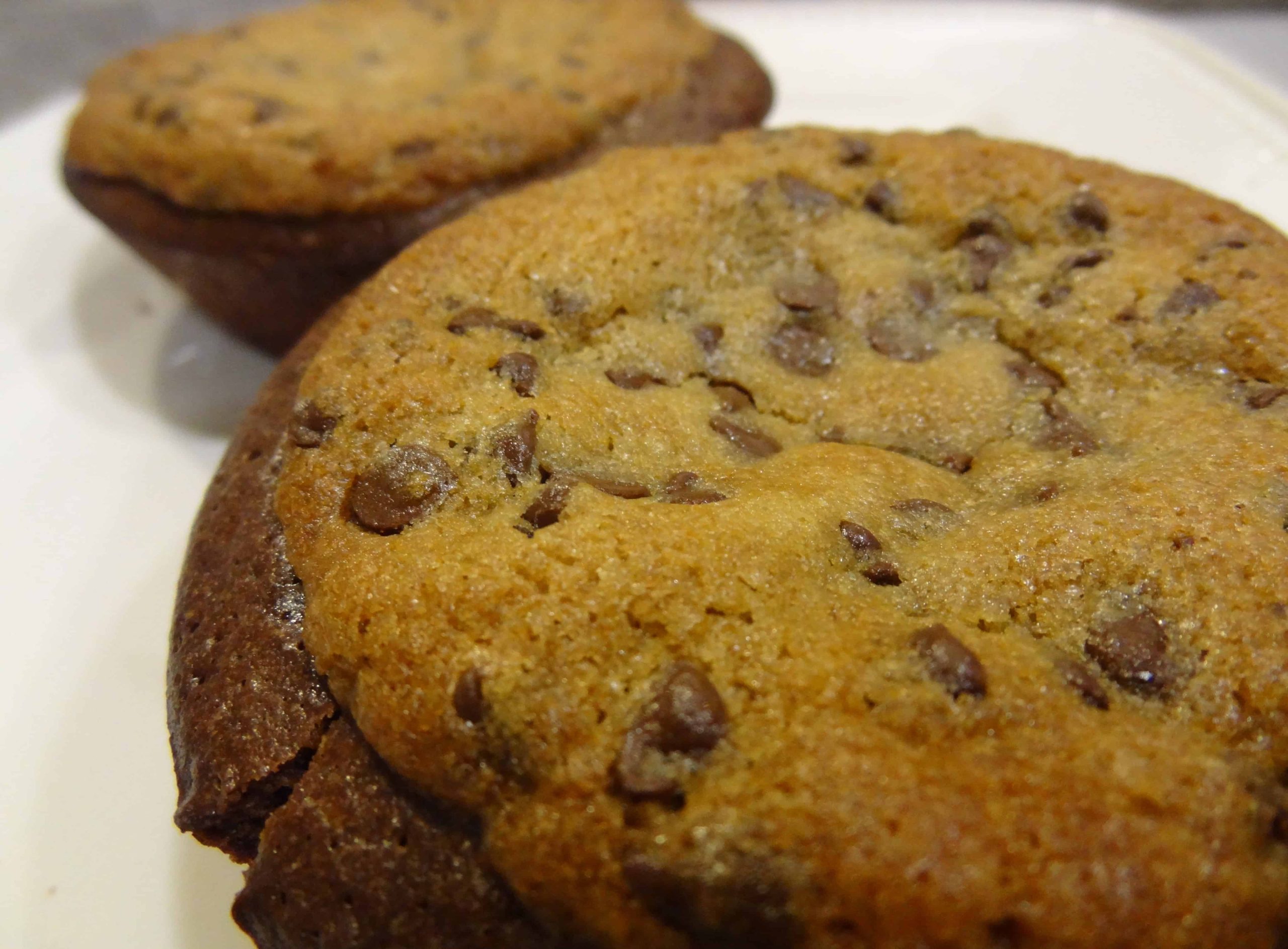
One Response